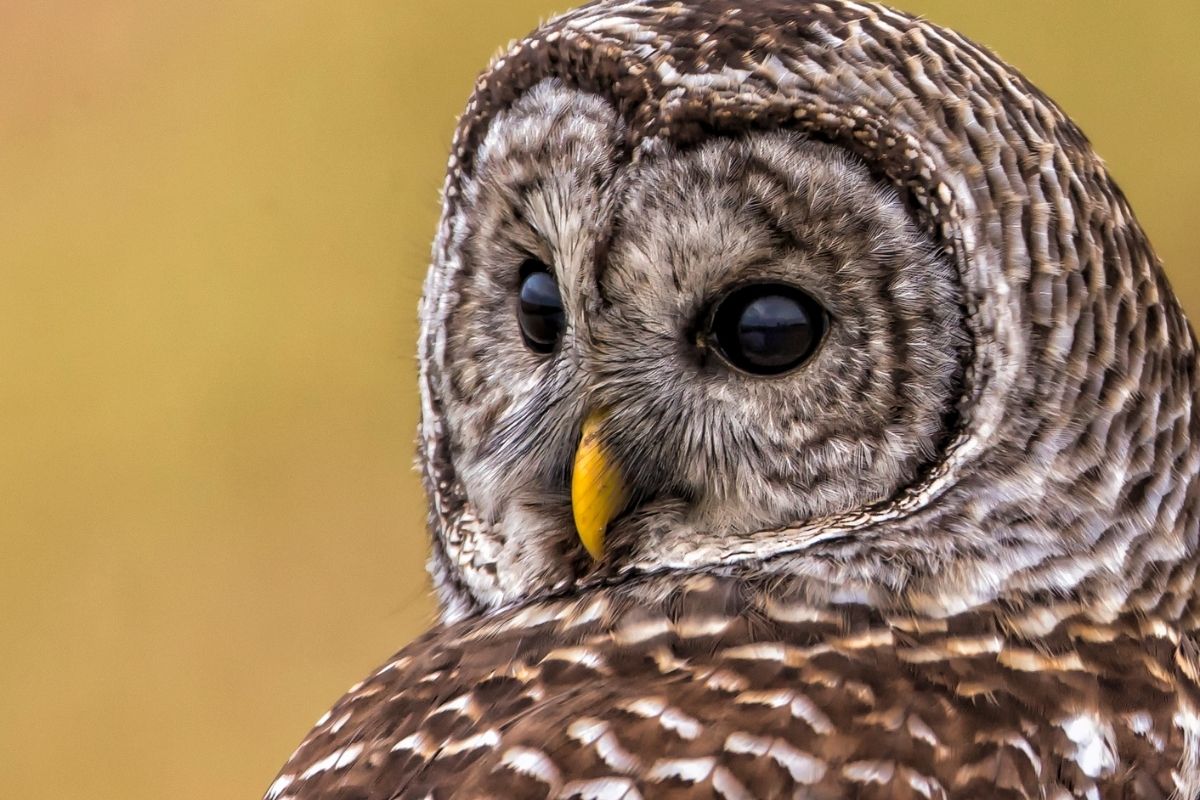By Nicole Rivard
The U.S. Fish and Wildlife Service has gone from sticking its head in the sand about why northern spotted owls are threatened—humans logging the forests they call home—to full-blown insanity.
That’s the word Michael Harris, director of Friends of Animals’ Wildlife Law Program, uses to describe the U.S. Fish and Wildlife Service’s most recent decision to give timber companies and the Oregon Department of Forestry the green light to kill and harass northern spotted owls, the same birds who it claims to be “protecting” since the summer of 2013 when it started shooting barred owls as part of an “experiment” to save Northern spotted owls.
That’s why Friends of Animals (FoA) is once again taking the agency to task for its backward thinking and for coddling the timber industry at the expense of both of these owl species. In a June 2, 2017 lawsuit, FoA challenged USFWS’ Enhancement of Survival Permits, which expand the horrific barred owl removal experiment to private and Oregon state lands. (Federal wildlife researchers killed 737 barred owls in 2015-2017 in Oregon, Washington and northern California as a result of the experiment, but admitted in March they lack evidence the experiment is working.) In exchange for allowing the federal government permission to kill barred owls on private land, the federal government, through the permits, is giving private property owners a 10- to 15-year pass to take northern spotted owls who may return on their property.
“Winning this case fits into our goals to establish a model to decommodify public lands and the animals who make these habitats their home, and to ensure that wildlife is not managed, but left to be ‘wild,’ Harris said.
A victory would result in two things, according to Harris.
“First, it would not allow the timber industry to take advantage of the barred owl’s presence. Basically, they like barred owls because they keep northern spotted owls away, which allows them to log without all those pesky Endangered Species Act restrictions,” Harris said. “Second, it would ensure that USFWS must continue to find a legitimate net conservation benefit for the northern spotted owl before authorizing any permit to kill northern spotted owls. Under the current permit, USFWS has allowed killing even though any future conservation benefit is wholly speculative.”
Drawing the battle lines
According to “There will be blood,” an article published in Conservation Magazine in 2014, the spotted owl is a shy bird that favors ancient forests. Its declining numbers led to its listing under the Endangered Species Act, bringing a halt to most old-growth logging in northwest federal forests in the early 1990s. By 2004, the USFWS decided that the migration of the adaptable barred owl from its original East Coast—which paralleled the spread of trees as homesteaders planted trees around their houses— was an additional threat because it is bigger and more aggressive than its smaller cousin. Wherever the barred owl turns up in large numbers, spotted owls start to disappear. Biologists suspect spotted owls abandon their nests when they are driven off by the barred owl. So the agency proposed the its experiment.
FoA has always recognized the significance of the 2013 experimental barred owl removal plan and how it cuts a massive exception to protections once provided under the Migratory Bird Treaty Act. (Not to mention the impact it has on taxpayers’ wallets—according to the Final Environmental Impact Statement, the estimated cost was $2,910,000.) That’s why the organization also filed a lawsuit in 2014, originally in California, and then in Oregon, to challenge USFWS’ plan to kill thousands of barred owls to “conserve” northern spotted owls. That case is currently in the appeal phase.
“Winning the first barred owl case certainly would give the Migratory Bird Treaty Act some life. It has really been diminished in the past 25 years,” Harris explained. “Under the government’s interpretation, protected birds can be taken lawfully whenever there is the possibility that doing so might benefit another species, presumably even humans.”
Live and let live
Harris has some concerns for wildlife in the future if FoA doesn’t prevail in these cases, especially as climate change pushes more and more animals into each other’s overlapping territories.
“The concern is that we will continue to manage species who migrate to new habitats as a result of climate change in a way that is intended to protect only the species who had previously lived there,” Harris said. “This will mean a lot of killing of those ‘migratory’ species. While human-induced changes in animals habitats is certainly a bad thing, once they happen animals need to be able to sort it out—even if that means some species become threatened or endangered—without human interference. We may have wrongly set the situation in motion, but we are only interfering further by trying to make it better for our ‘preferred’ species.”
The controversial nature of USFWS’ experiment and the lawsuits that have ensued have garnered plenty of media attention. Harris believes it’s because of the ethical conflict of wildlife managers deciding to shoot and kill a species that is not really one that can be considered “invasive.” Barred owls are by nature migratory and will fill any available niche. While humans might have indirectly created additional niches in that we planted trees as we developed towns and cities in the Midwest and west, that does not, in Harris’ opinion, make them invasive in the northwest.
“It is a human decision to involve itself in nature, to choose a side, and to potentially set in motion a program of killing one species for an indefinite period of time to help protect another,” Harris said. “What I fear most is the public becoming numb to the use of killing animals as a tool to ‘manage’ nature, and equally numb to humans overall being involved in every aspect of the lives of wild animals.”
.

